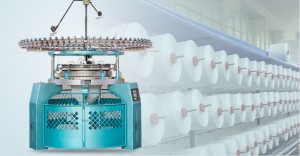Last week, Aquiles Bermudez the chairman of ADOZONA indicated that the Dominica exports have increased in recent 3 years, while the industries and factories face both great opportunities and risks brought by the DR-CAFTS and TPP.
CAFTA, short for Central America Free Trade Agreement, is signed to promote the business relationship among Central American countries and the USA. According to the agreement, exports to America should follow the Rules of Origin. That is, only goods that are originally manufactured in these participating countries would exempt from customs duty when exported to America. Therefore, the DR-CAFTA is good for increasing Dominican exports in the USA.
The trade deficit of Dominica with the USA has been dramatically decreased from 1.611 billion in 2012 to 1.363 billion in 2013 by 15.4%.
Dominican Commerce and Industry Minister Jose Del Castillo said that, DR-CAFTA focuses on not only the international trade deficits of commodities, but also the other aspects such as service line, investments, government procurement, telecom, insurance, e-commerce, labor and environmental protection etc. This is beneficial for the development of Dominican economy.
Jose Del Castillo also states that the Short Supply List of Textile Goods in Trans-Pacific Partnership Agreement is good for its member state Vietnam and thus brings negative influence to Dominica. It is estimated that Vietnam would purchase raw materials of textile from other Asian countries and sell it to American after processing production. While at the same time, Dominica textile exports to the USA would be greatly weakened due to the Rules of Origin.
It is suggested that, America should provide the same treatment to the member states of TPP and DR-CAFTA. Countries in Central America and Caribbean must spend more time to do adjustment so that they can decrease the adverse impact of the tariff reduction and exemption enjoyed by TPP member countries.
In 2015, it is urgent for Dominica to improve its international competitiveness and encourage the exporters upgrade their goods and construction. The effective utilization of DR-CAFTA will greatly promote the economy of Dominica and reduce the bad influence brought by TPP to some extent.
